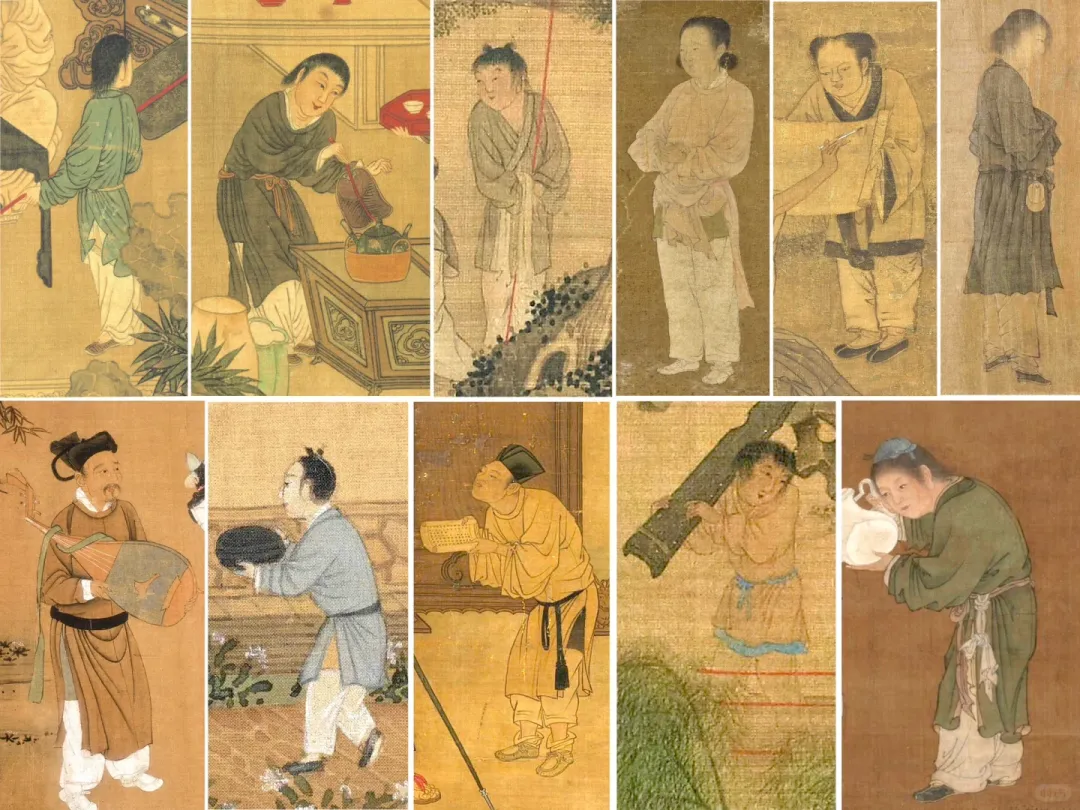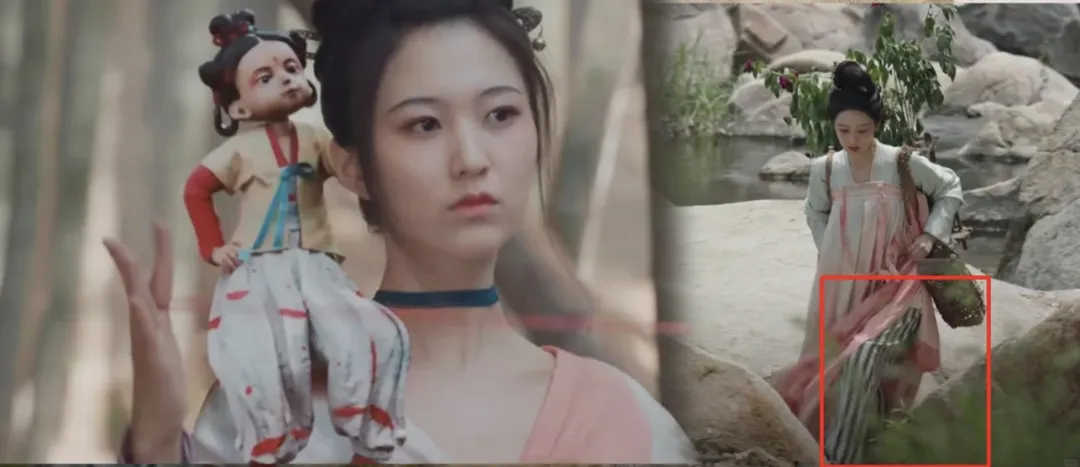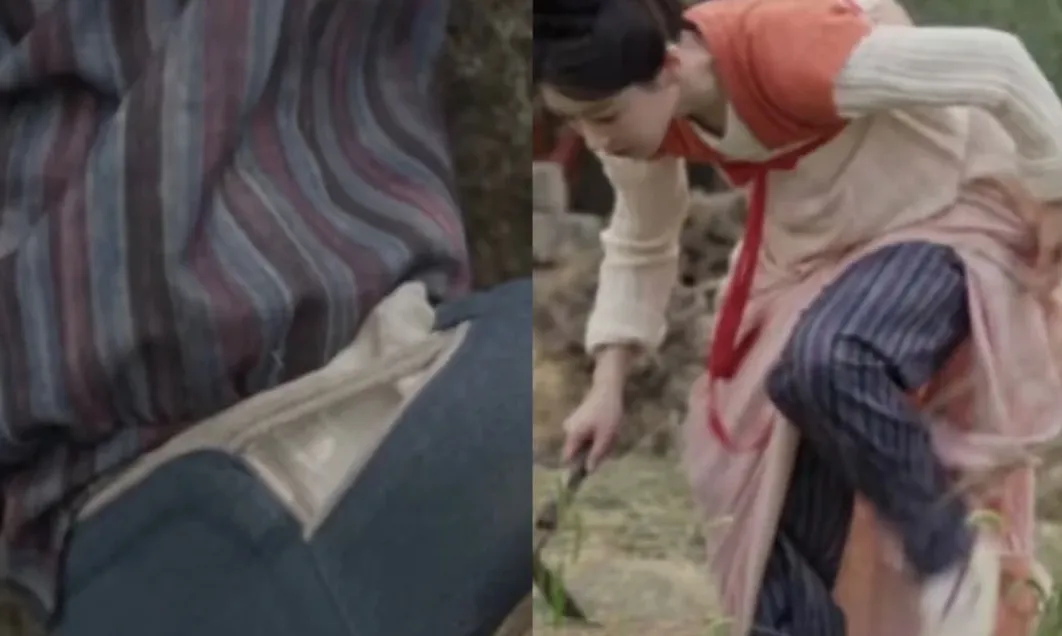It turns out that there's not nothing under the skirts! In the ancient costume drama The Ferryman of Peace and Tranquility, the image of the puppet wearing pants is truly eye - catching. It seems that female characters rarely wear pants. After reading this, you can boldly say: Ancient women also wore leggings under their skirts, and they were even in the style of harem pants!
Previously, in the drama The Splendid Life, there were scenes where the characters almost 'flashed' without leggings, which made many people mistakenly think that there were just bare legs under the skirts. This is really a big joke. Let's start with the conclusion. Pants have existed in ancient times for a long time. Crotch - sewn pants have been unearthed from the Shang and Zhou dynasties. In the Tang Dynasty, a kind of harem pants that could be worn outside even became popular. They had a design to cinch the cuffs, which was very fashionable and convenient for daily life. Similar harem pants appear in The Ferryman of Peace and Tranquility and The Gorgeous Empire. Don't they look exactly the same as the harem pants we wear now?
This kind of pants appeared earlier than we thought. They could be worn as bottoms under outerwear (partially exposed) or directly as a single outfit (more commonly worn by children outside, less so by adults). Even earlier, there were pleated harem pants, which appeared as early as the Wei and Jin dynasties and had an elastic waistband. It's hard not to suspect that a classic harem - style cinched - leg pants from the Japanese brand Issey Miyake took inspiration from this prototype.
Besides harem pants, there are also the suspender striped pants worn by the children in the paintings. They not only have stripes but also double suspenders, which is really a visual shock. Previously, netizens questioned the pants in The Gorgeous Empire: 'Aren't these the pajama pants we usually wear? Why are they in ancient times?' You know, any of these pants would be a hit on the streets today.
Let's go even earlier to trace the origin of these cinched - leg pants. We can see from the shin - covering clothes popular in the Qin and Han dynasties and the pants unearthed from the Mashan Chu Tomb that there were also cinched designs at the cuffs. The cinching might not be at the cuffs but at the knees. For example, in the ku - zhe outfits popular during the Wei, Jin, and Southern and Northern Dynasties, people usually wore flared pants on the lower body. Some would tie a long belt at the knee bend, which made walking more convenient. This was also called 'tied pants'. These pants usually appeared in the military and were later adopted in daily life. For a while, it was fashionable for everyone to wear ku - zhe outfits.
In the end, the design of adding straps to the pants was to facilitate daily life and walking. For the early wide - legged pants (similar to today's 'wide - leg pants'), they were more suitable for riding and working scenarios. Combining the characteristics of the nomadic people in the northwest, they became the harem pants we see today. So the ancients could choose different pants according to different scenarios. For example, they could choose harem - style pants for working, riding, etc., and wide - leg pants for formal occasions like daily banquets and ceremonies. Also, in daily scenarios, they could choose plain - colored pants that were easy to replace, while in ceremonial scenarios, they could add some patterns.
From the Tang and Song dynasties, regardless of their status, people basically wore a pair of pants under their skirts/robes, and it was popular to add floral decorations. The popular styles varied in different periods. For example, in the Tang Dynasty, influenced by the local and Hu cultures, both stripes and medallion flowers were popular, while in the Song Dynasty, elegant small flowers and grass patterns were in vogue, showing more characteristics of the times.
In The Ferryman of Peace and Tranquility, the puppet has double - looped buns on the head, wears a short - sleeved jacket and a narrow - sleeved front - buttoned top on the upper body, harem pants on the lower body, and cloud - toe shoes on the feet. The overall look is like a child, which also conforms to the situation of children wearing harem pants outside. This kind of direct combination with pants is quite rare, so it's no wonder that it impressed the netizens deeply. It makes us realize that ancient clothing culture is full of surprises, waiting for us to explore more.




